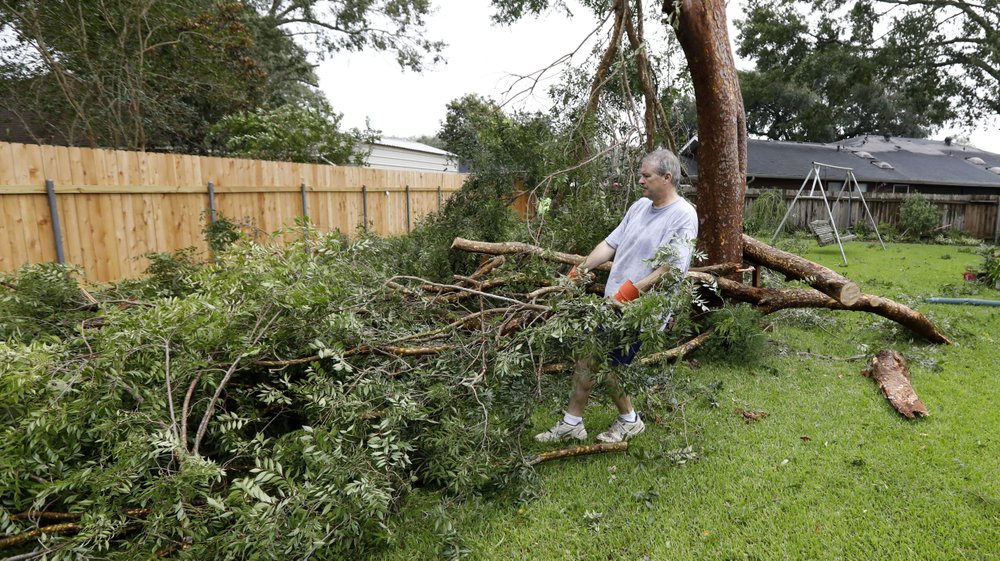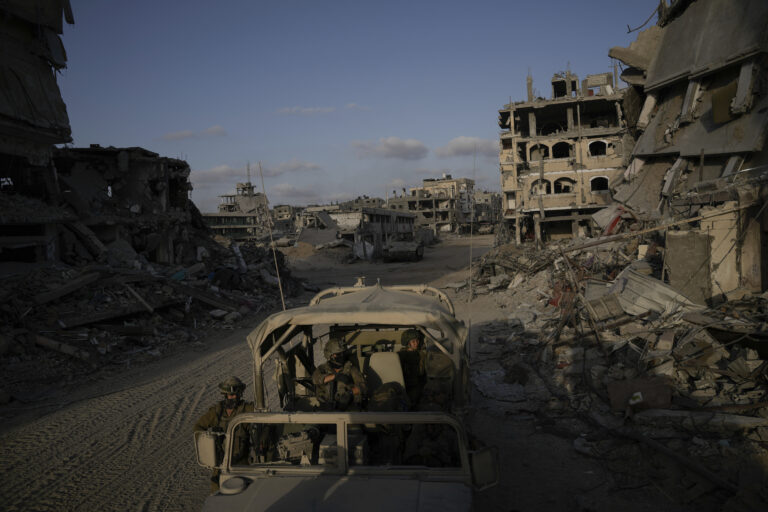Tropical Storm Barry dumped rain as it slowly swept inland through Gulf Coast states Sunday, appearing to spare New Orleans a direct hit, but stoking fears elsewhere of flooding, tornadoes and prolonged power outages.
Mississippi’s capital city braced for possible flash flooding after up to 3 inches (7.6 centimeters) of rain fell in the Jackson area before dawn Sunday — and more was on the way. That prompted the National Weather Service to issue a flash flood warning for the city and some of its suburbs.
And far from the storm’s center, tornado warnings were issued east of Baton Rouge and in Mississippi, but no serious damage or injuries were reported by midday.
President Donald Trump asked people across the region to keep their guard up, saying on Twitter Sunday: “A big risk of major flooding in large parts of Louisiana and all across the Gulf Coast. Please be very careful!”
Forecasters warned of a continued threat of storm surge and heavy rains as the center of the storm trudged inland and rain bands along its back half moved onshore. The U.S. National Hurricane Center said Sunday parts of south-central Louisiana could still have rainfall totals of up to 12 inches (30 centimeters), with isolated pockets of 15 inches (38 centimeters).
“This rainfall is expected to lead to dangerous, life-threatening flooding,” forecasters wrote in an advisory Sunday morning.
Still, the storm had not inundated New Orleans as feared. Forecasters downgraded rainfall estimates for the city through Sunday to between 2 to 4 inches (5 to 10 centimeters). Earlier forecasts of quadruple that amount had raised concerns that water pumps strengthened after Hurricane Katrina would be overwhelmed. In a sign that the city was returning to normal, flights were resuming Sunday at its airport.
Around Louisiana on Saturday, Barry flooded highways, forced people to scramble to rooftops and dumped heavy rain as it made landfall near Intracoastal City, about 160 miles (257 kilometers) west of New Orleans. Coast Guard helicopters rescued a dozen people and two pets from flooded areas of Terrebonne Parish, south of New Orleans, some of them from rooftops, on Saturday, a spokeswoman said.
After briefly becoming a Category 1 hurricane, the system weakened to a tropical storm, the National Hurricane Center said. By Sunday morning, its maximum sustained winds had fallen to 40 mph (65 kph).
None of the main levees on the Mississippi River failed or were breached, and they were expected to hold up through the storm, Gov. John Bel Edwards said.
About 125,000 customers in Louisiana and another 6,800 customers in Mississippi were without power Sunday, according to poweroutage.us.
Carrie Cuchens, who lost power at her home southeast of Lafayette, said crews were out working to remove trees that fell on power lines. Forecasters say the area, where several parishes were under a flash flood warning, could see 2 inches (5 centimeters) of additional rain on Sunday. Though some yards had pooling water, Cuchens didn’t think her or her neighbors’ homes would flood.
“There’s certainly water, certainly a lot of water, and as it continues to rain there’s always that concern,” she said.
Another worry is that large trees could topple because of the saturated ground.
“If this rain sits on top of us, the ground of course now is already saturated,” she said. “The roots are so saturated that if any wind, or any kind of shift happens, they’re easier to come up out of the ground. It’s not snapping limbs – it’s the whole entire tree. We have 100-year-old trees back here.”
To the southeast in Morgan City, Lois and Steve Bergeron spent Sunday cleaning up their lawn, which was littered with debris from trees. They were grateful the damage wasn’t worse.
“At least it didn’t hit our house,” she said.
And in Mandeville, north of New Orleans along Lake Pontchartrain, Michael Forbes was also picking up limbs and other debris at his home as a drizzle fell. Water got under his house, which is on stilts, but there was no damage and the power never went off.
“I’ll take this any day over something like Katrina,” he said Sunday. “This will clear out, we’ll clean up and we’ll go on.”
Barry was expected to continue weakening and become a tropical depression Sunday, moving over Arkansas on Sunday night and Monday. But forecasts showed the storm on a path toward Chicago that would swell the Mississippi River basin.
(AP)











